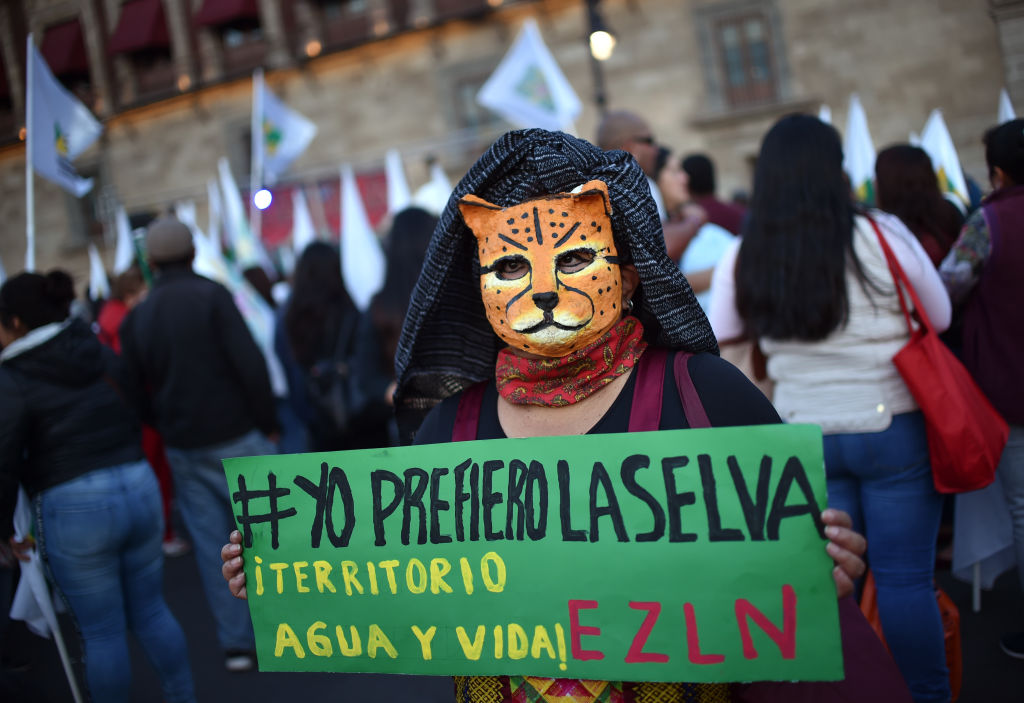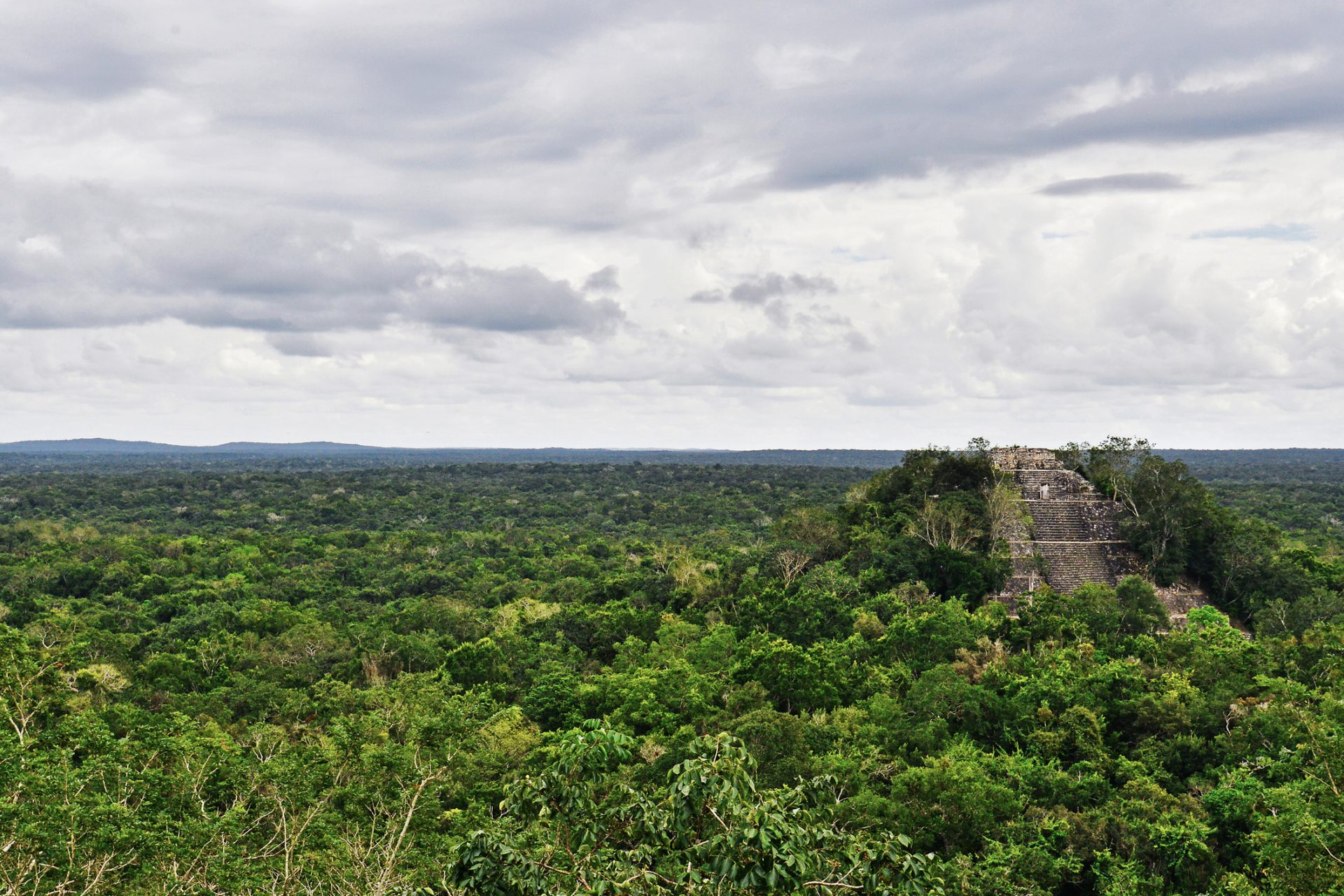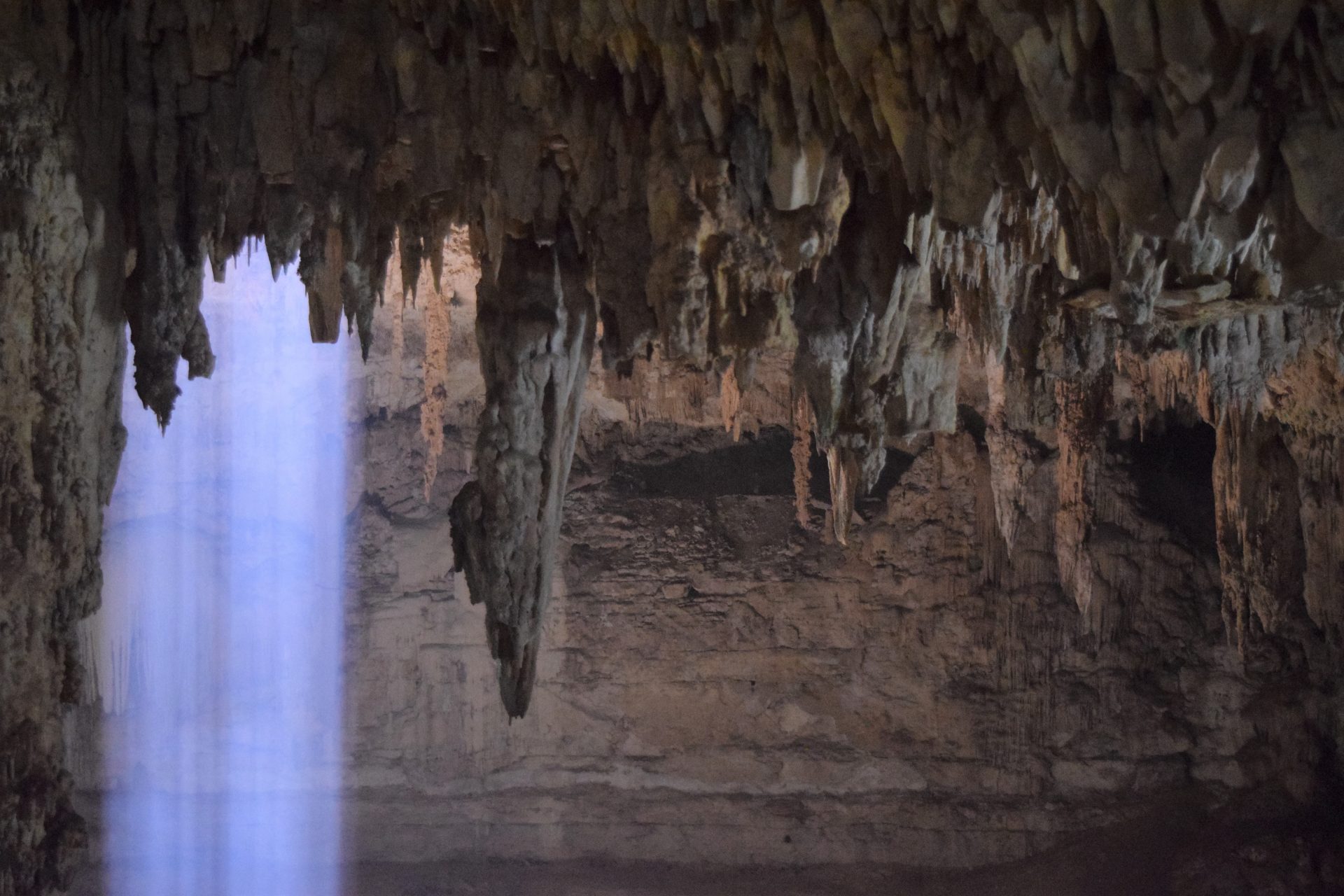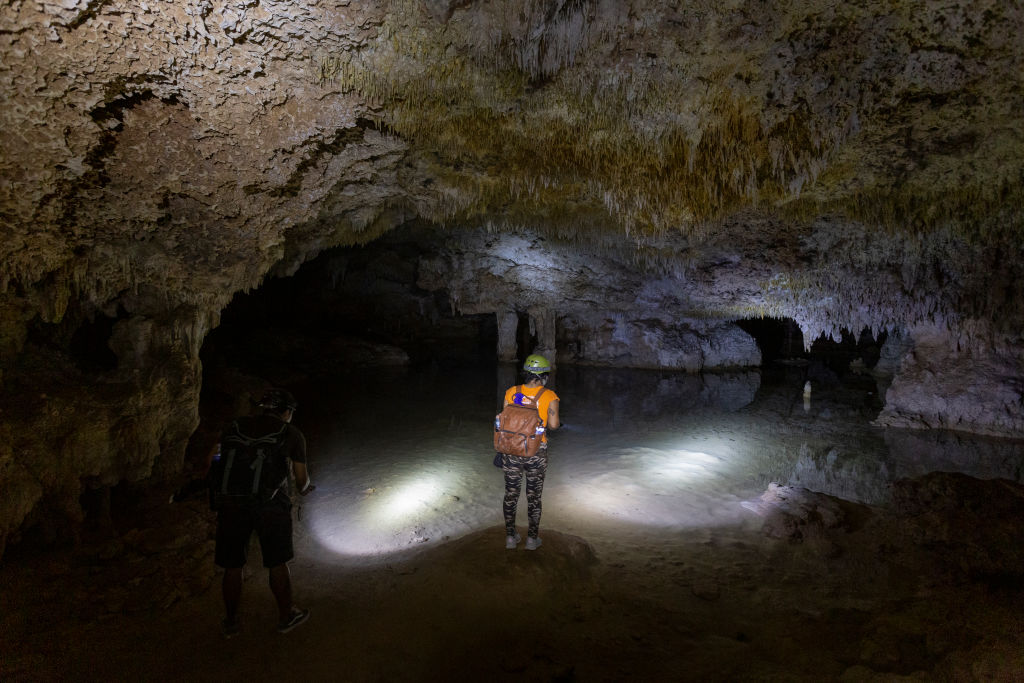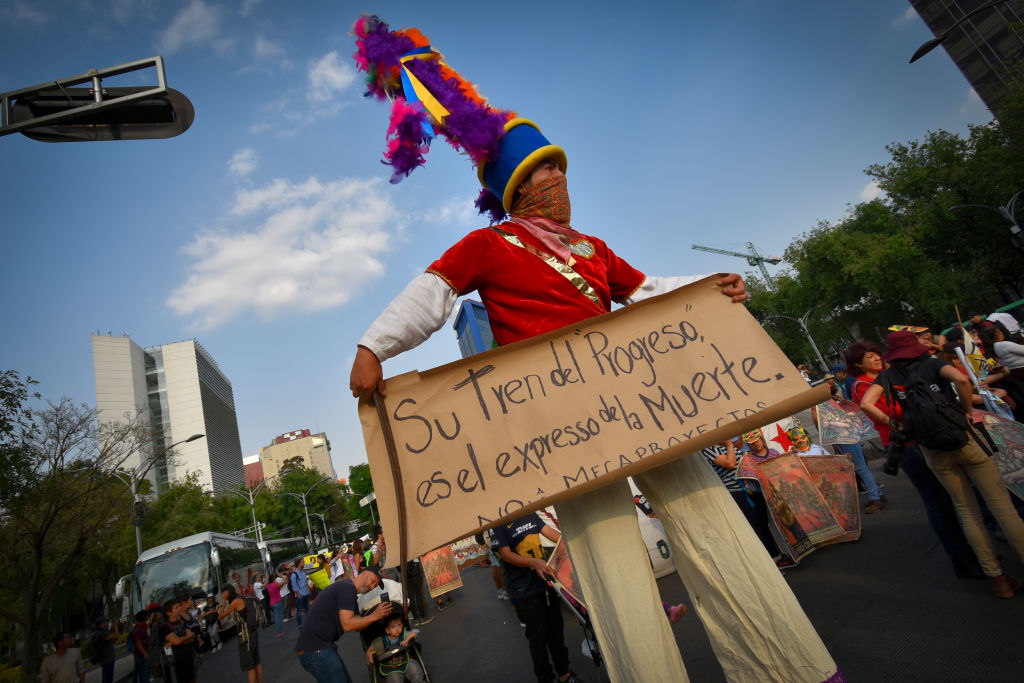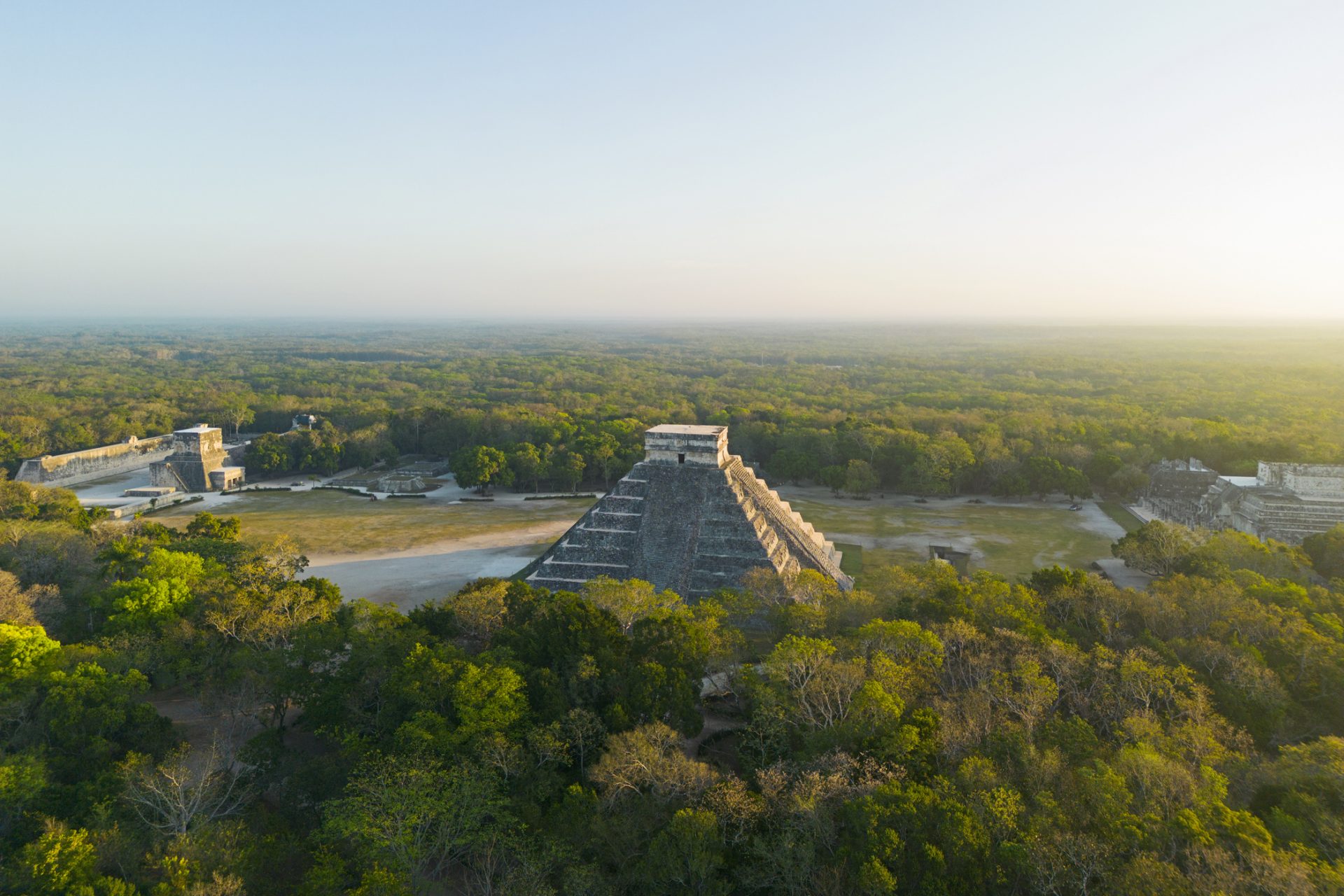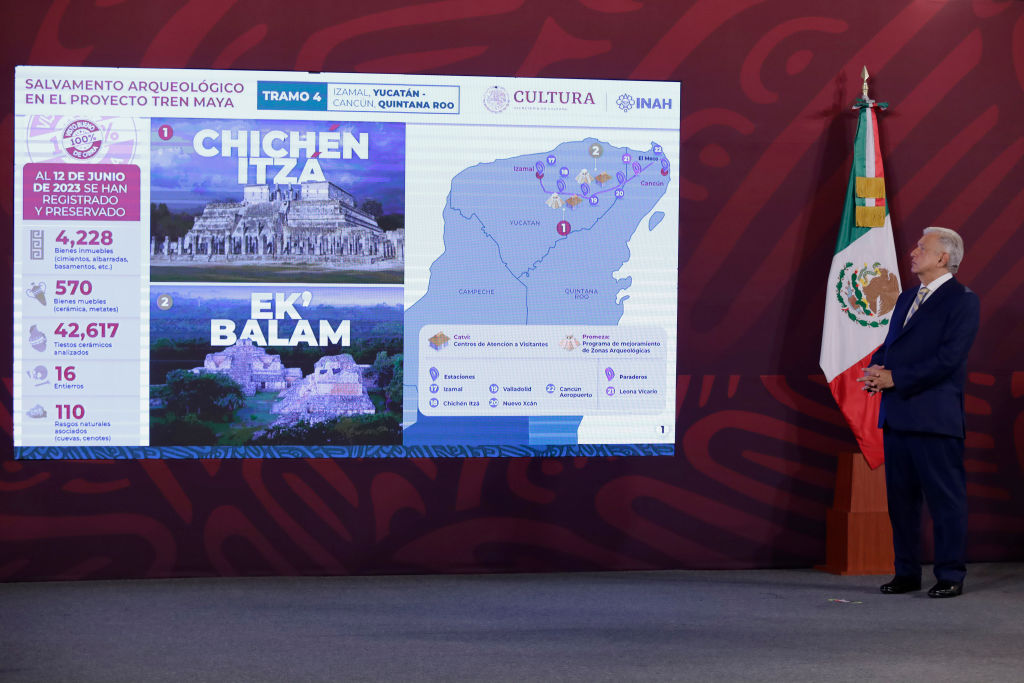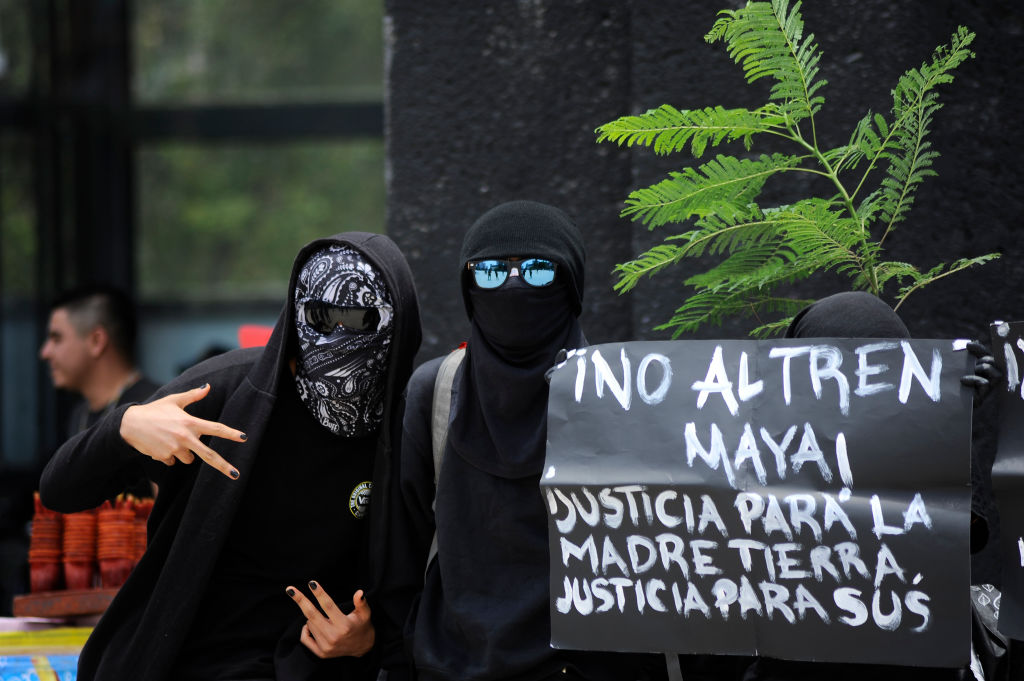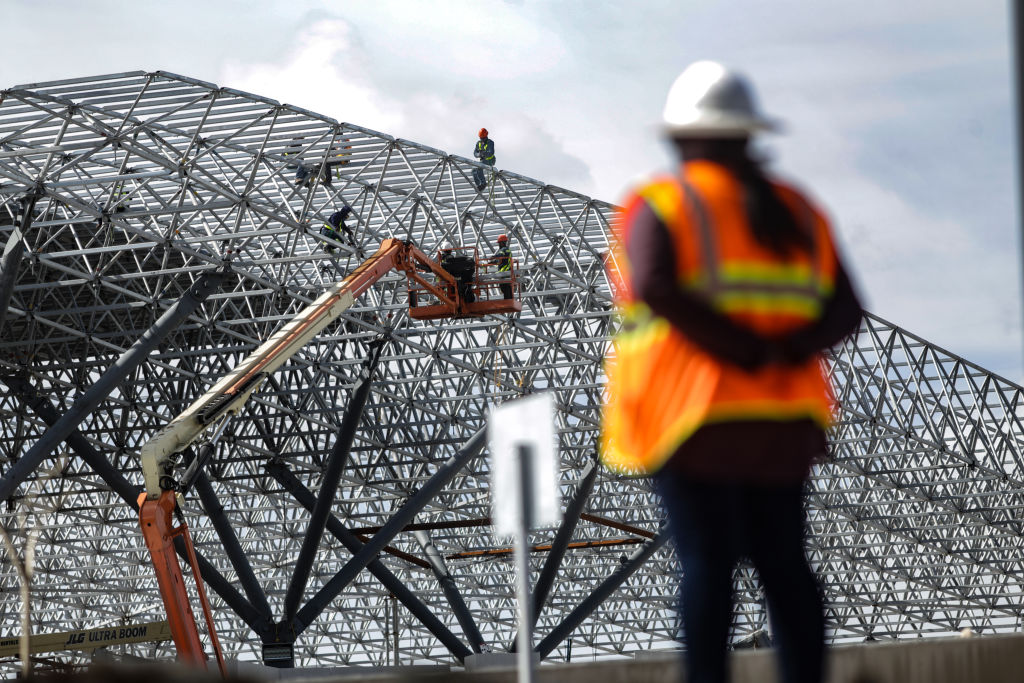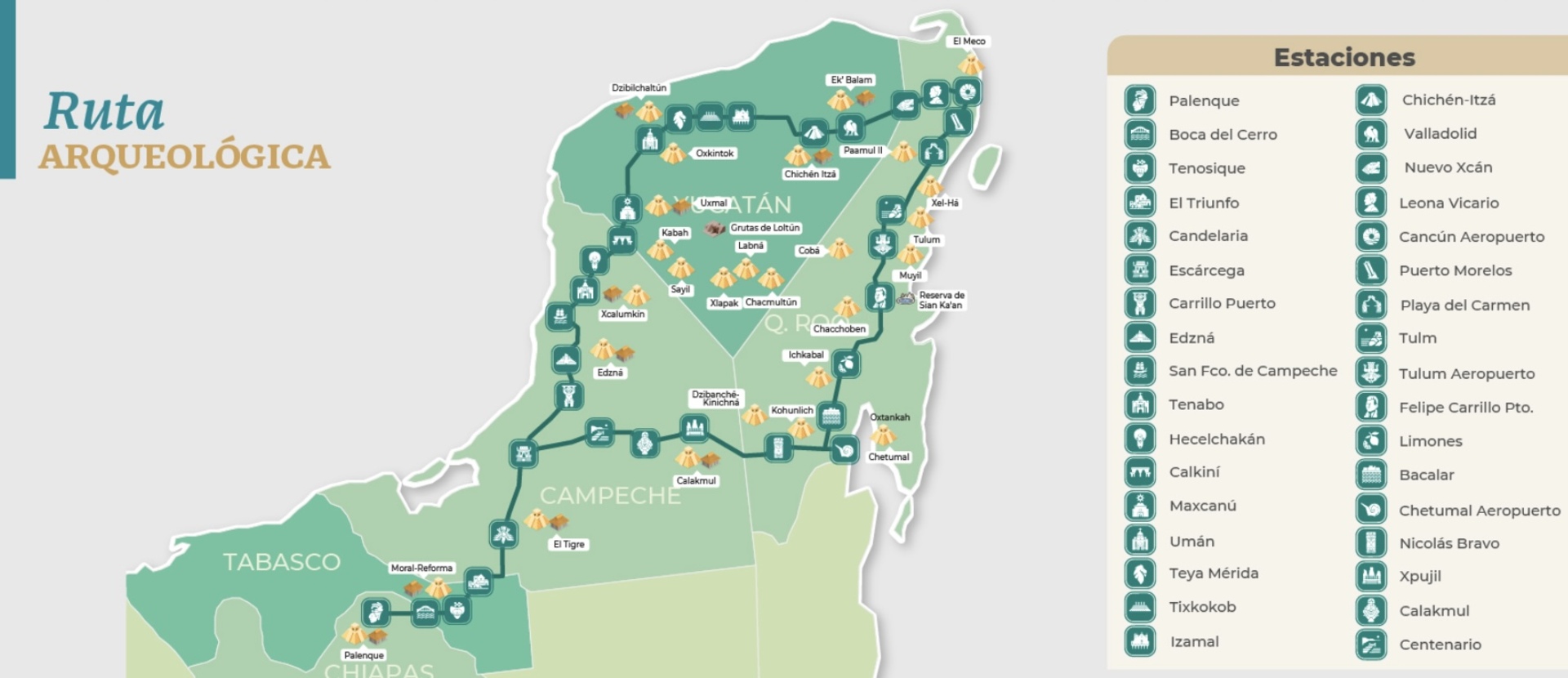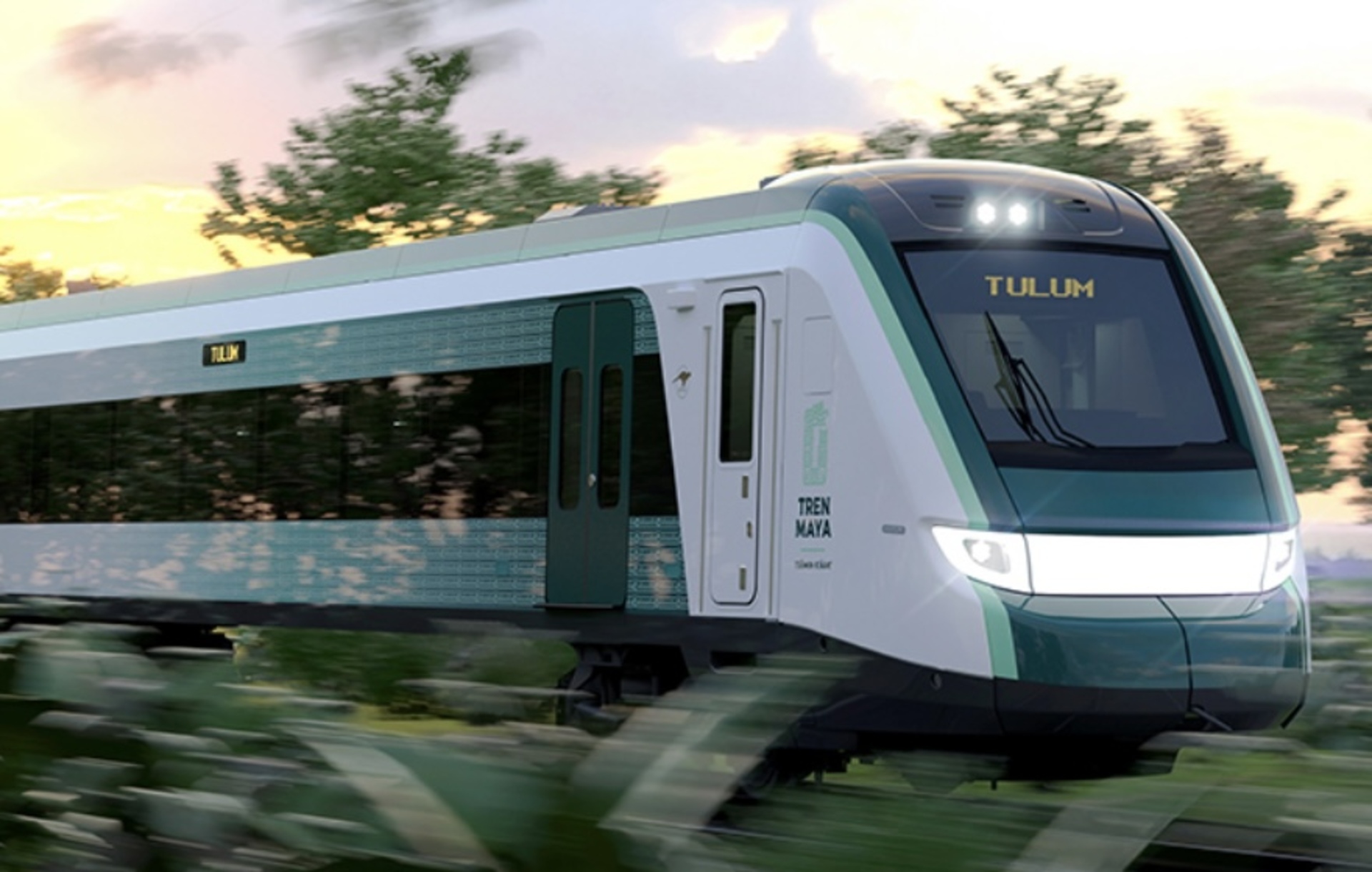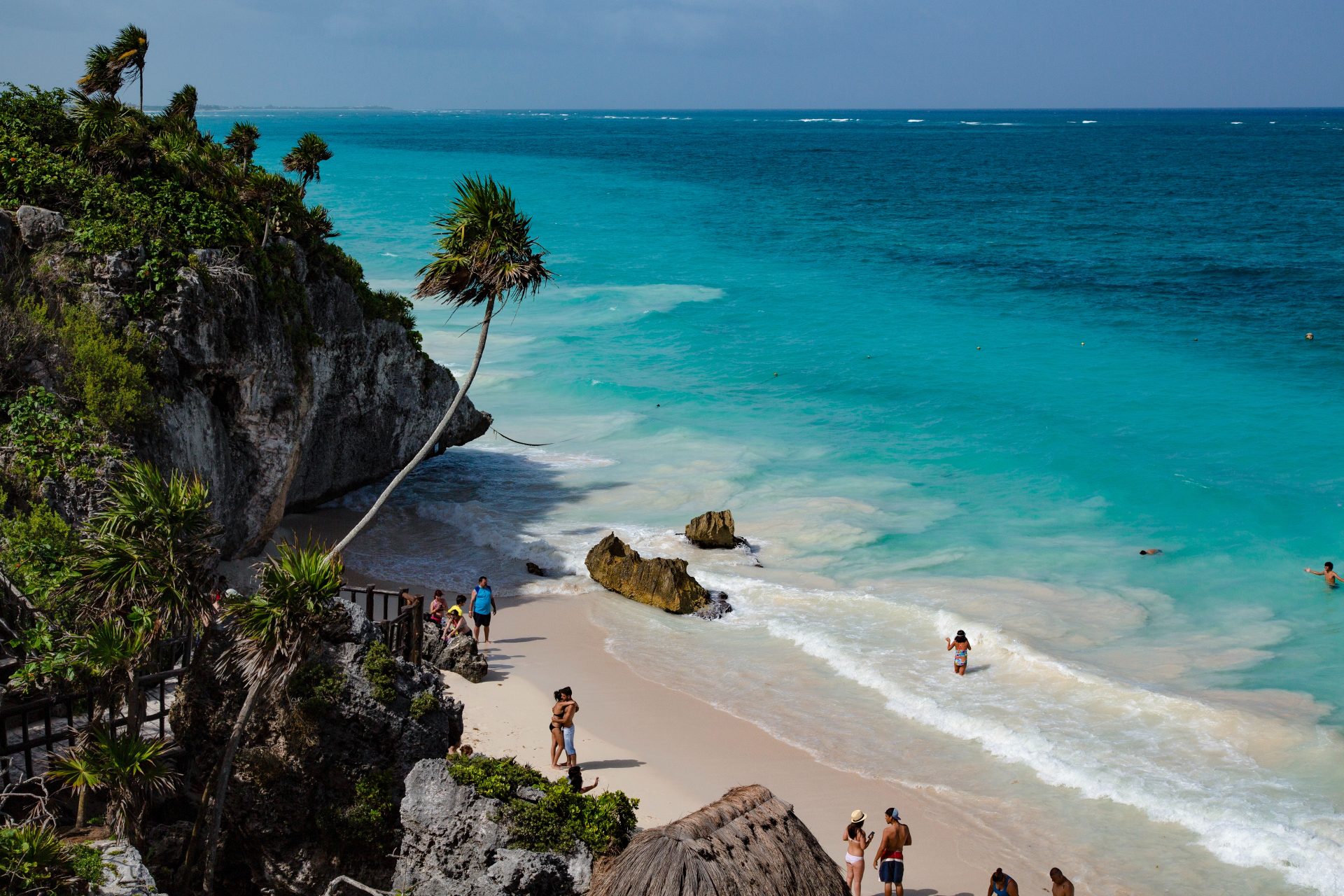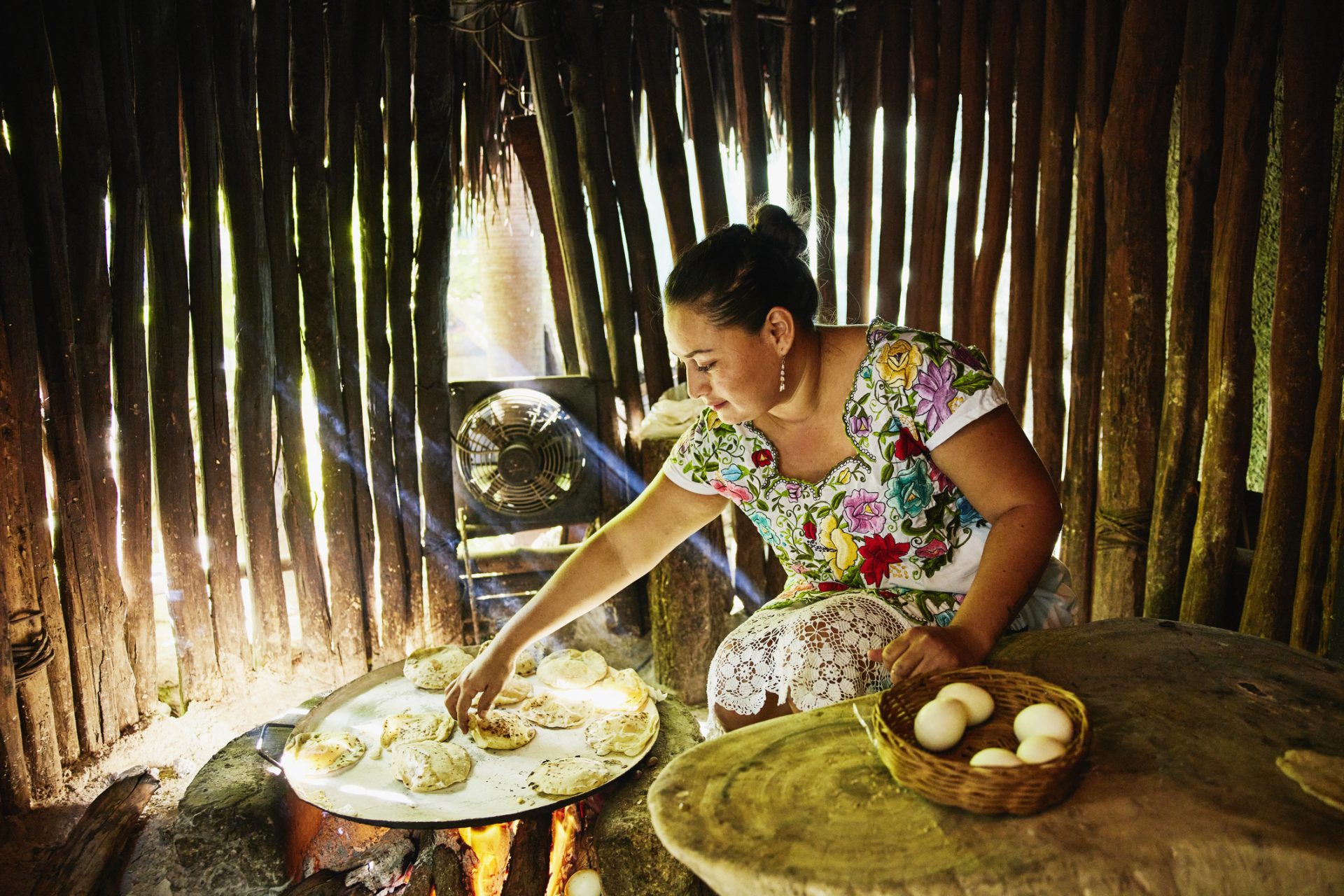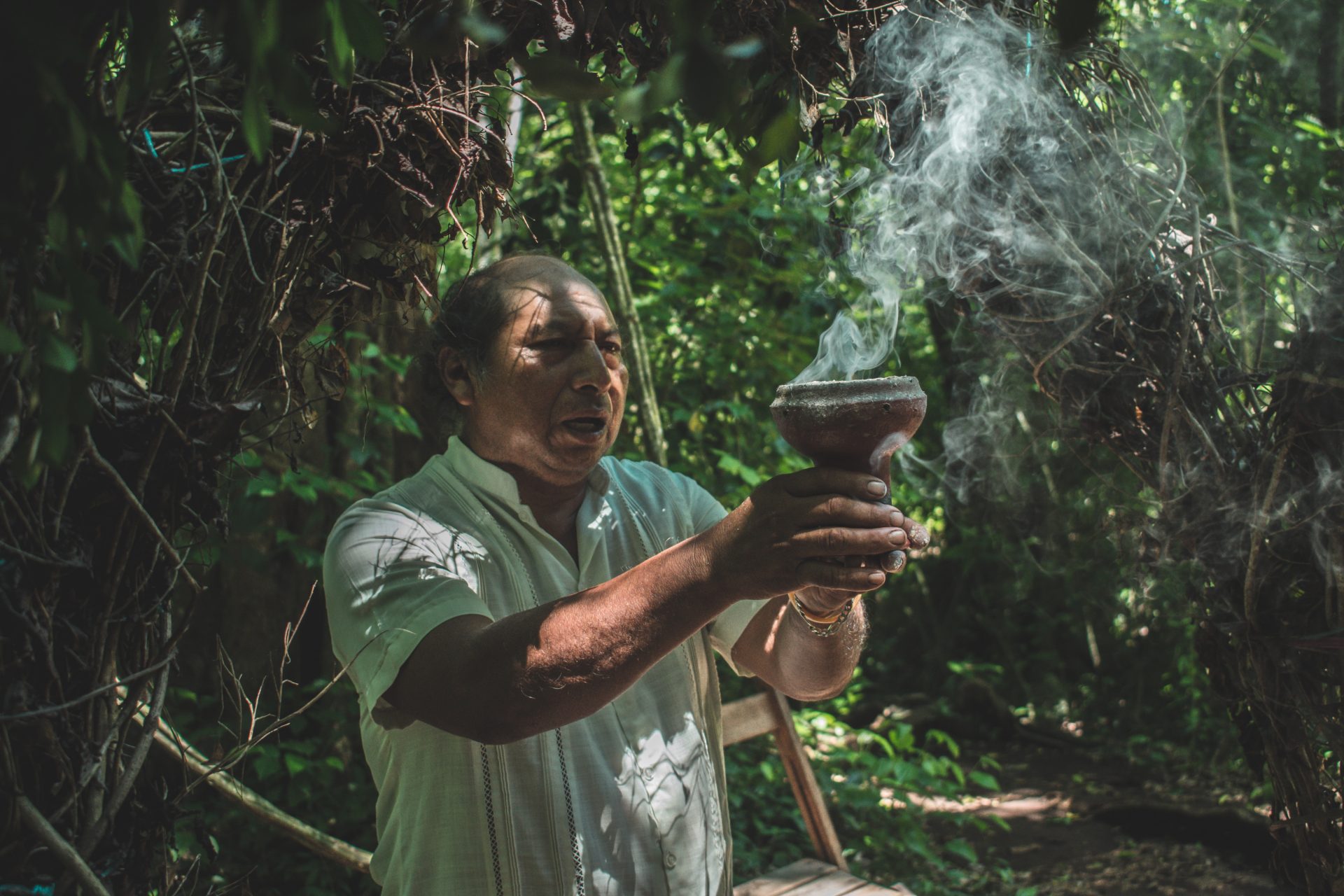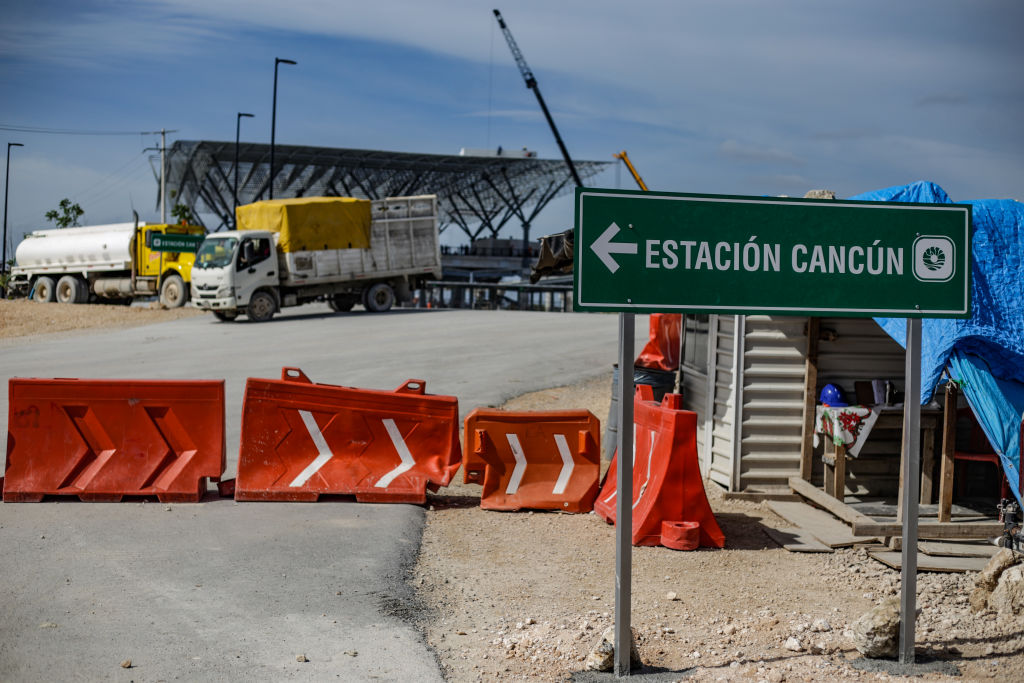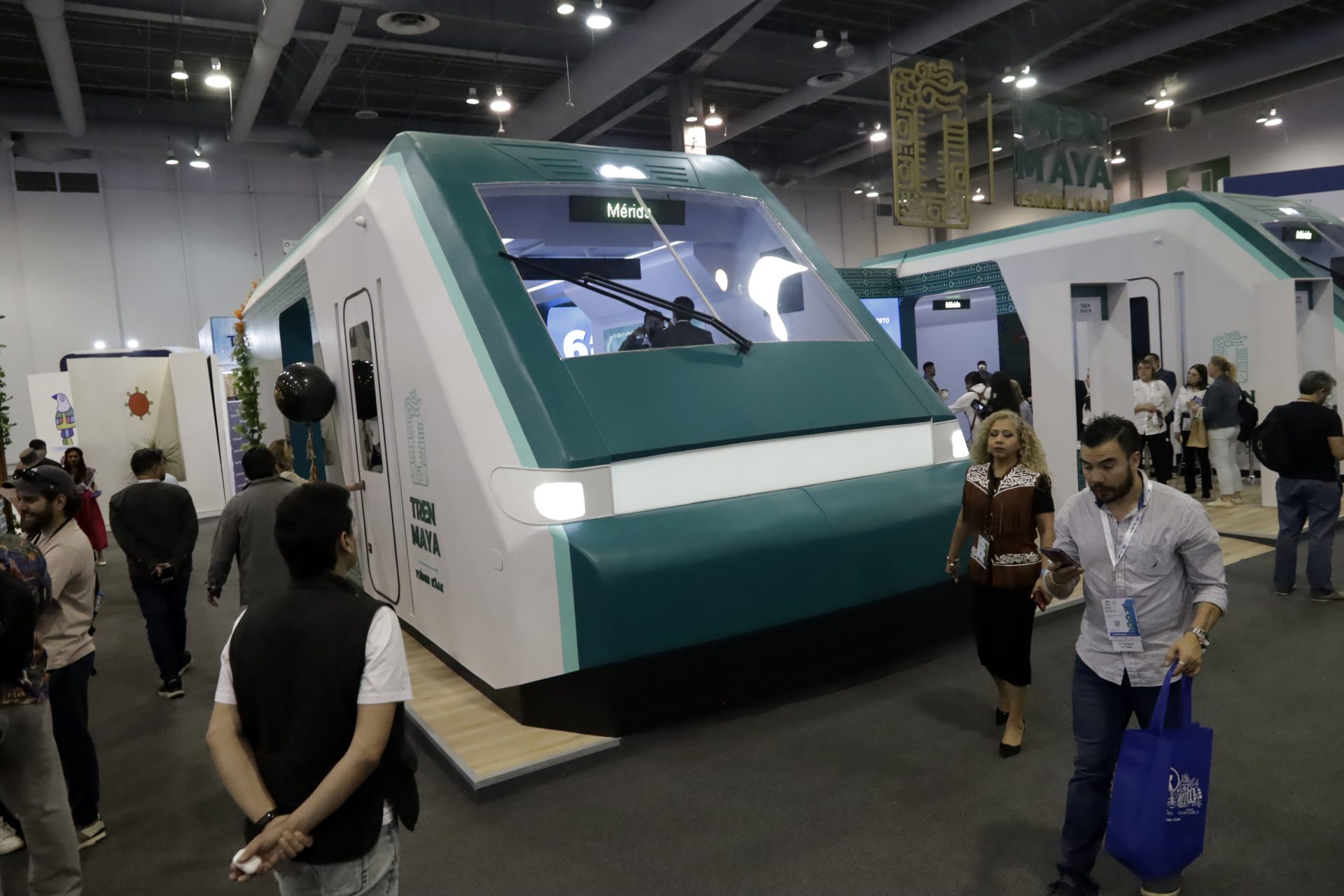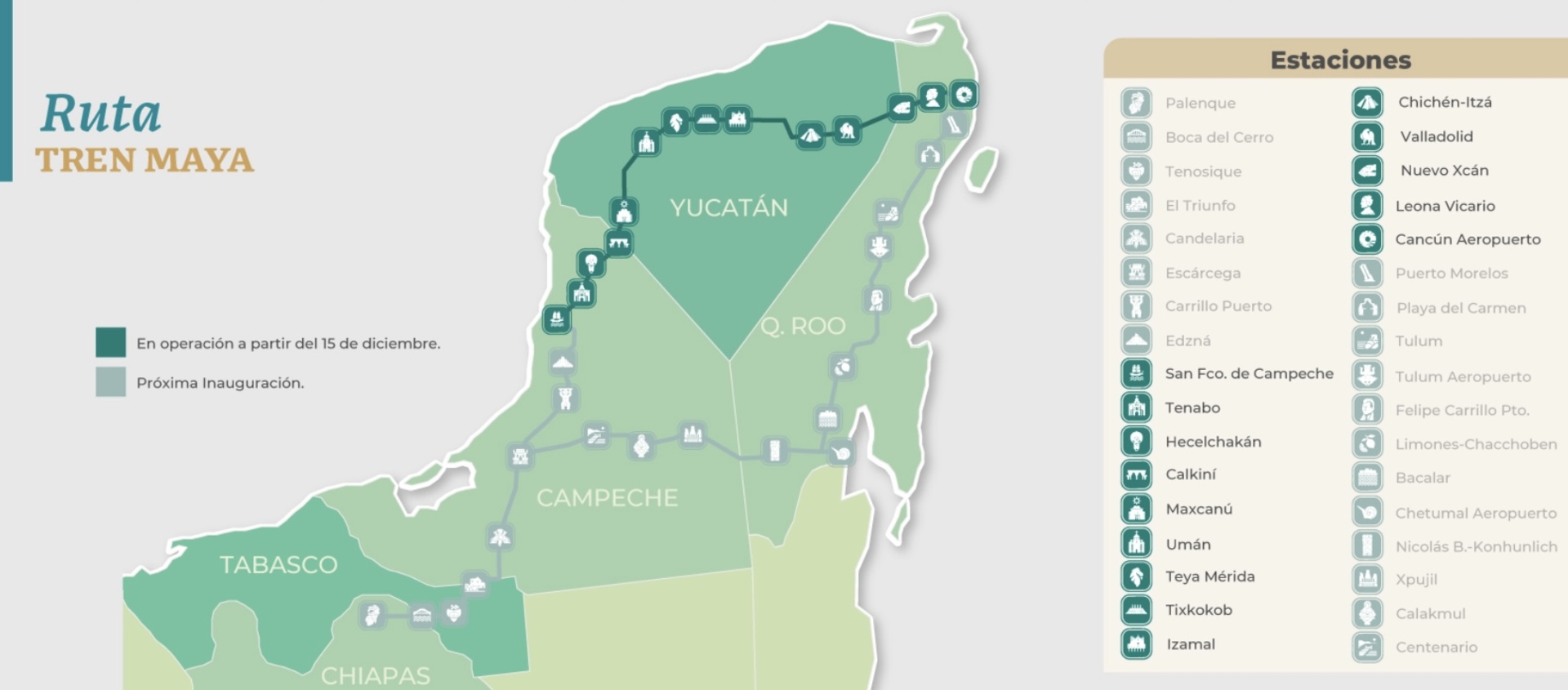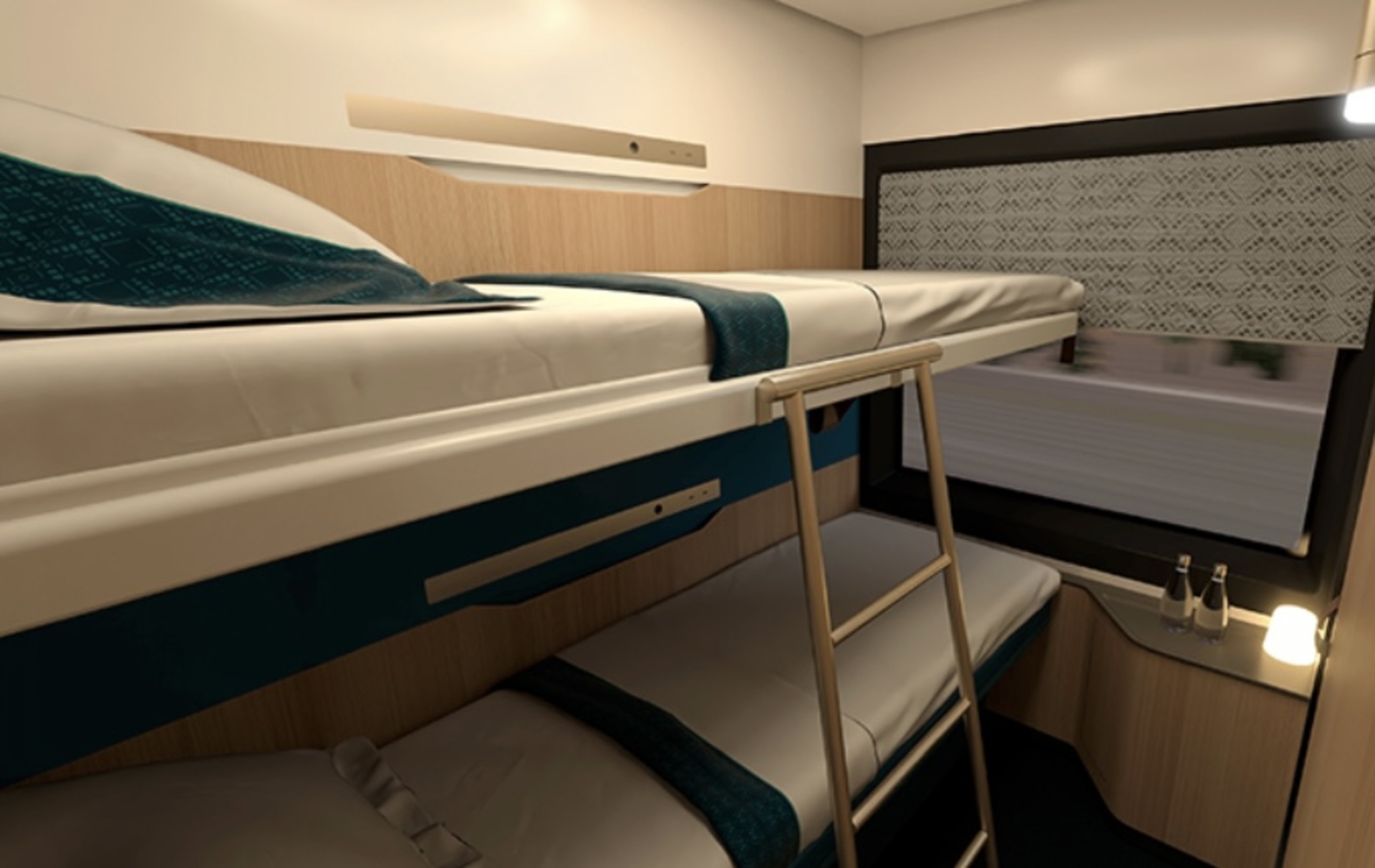A controversial project
Since the beginning of its construction in December 2018, the Maya train was the subject of controversy and legal protections that slowed the progress of its construction, but in the end, could not prevent it.
First trip: December 15
Mexican President López Obrador’s government managed to evade both criticism and legal protections from environmental institutions. The Maya train opens officially on December 15, 2023, being its first trip from Campeche to Cancun, according to its official website.
Millions of trees cut down
The Riviera Maya, which the train passes through, is the largest jungle in America after the Amazon and the 1,525 km (947 miles) of train tracks resulted in the cutting of 3.4 million trees, according to the Mexican government; although some environmentalists suggest that the real number is closer to 10 million, as reported by The Guardian.
In the picture, sign says ‘I prefer the jungle. Territory, water and life'.
Calakmul biosphere reserve: home to jaguars and other species
Academics, scientists and environmentalists showed special concern for the Calakmul biosphere reserve that the train passes through and which is considered a world heritage site by the UN, home to several species, some in danger of extinction, such as the jaguar.
Jaguars getting killed
The founder of the Jaguar Wildlife Center, Raúl Padilla, told the BBC that as a result of the construction of the train, road kills of jaguars increased due to their movement to find prey in other places.
Photo: Chuttersnap/Unsplash
Damage to cenotes
Another major concern was damage to the cenotes (interconnected underground caves) that are part of the Mayan aquifer, one of the largest in the world and the main source of drinking water for the Yucatan Peninsula.
Photo: Carlos Nakazato/Unsplash
Danger of collapse
Activists pointed out the danger of collapse in this underground labyrinth, not only during the construction of the train, but also due to the vibrations it will cause when it begins to operate, according to the BBC.
Complaint of ecocide and ethnocide
In July 2023, the International Rights of Nature Tribunal determined that the Maya train project is an ecocide and an ethnocide, as reported by Infobae.
Violation of the rights of nature and the Mayan people
“The Court's verdict highlights the violation of the rights of nature and the biocultural rights of the Mayan people, who have been and continue to be guardians of their territory ,” the report stated.
The organization blamed the Mexican State
The international organization, created by citizens to investigate and disseminate violations of environmental rights, held the Mexican State responsible.
Almost 3,000 displaced people
It is also estimated that the construction of the train resulted in the displacement of almost 3,000 people who lived in its path, according to The Guardian, although many of the residents of the area are in favor of the project.
In the photo, sign says ‘No to Maya train, justice for Mother Earth’.
Almost a million new jobs
According to a study published in 2020 by UN-Habitat, the project could create almost one million new jobs and help lift 1.1 million people out of poverty by 2030.
New archaeological zones, museums and hotels
The project also includes the opening of two new archaeological zones in the state of Quintana Roo, as well as the construction of museums and six hotels in the area, according to the BBC. The World Tourism Organization said the train will triple visitor arrivals to the region.
Photo: trenmaya.gob.mx
Connect poor states with tourist enclaves
The Mayan Train passes through some of the states with the highest poverty rate, such as Chiapas, where it is expected to improve communication in areas with limited infrastructure and connect these regions with tourist enclaves, such as the Riviera Maya and Cancun.
Photo: trenmaya.gob.mx
The economy in the region has already grown
The Quarterly Indicator of Regional Economic Activity showed that the Mexican southeast became the fastest growing region during the second quarter of 2023 by growing 6%; double the average of the rest of the country.
Photo: Tanja Cotoaga/Unsplash
Referendum showed majority support
According to a referendum carried out by the Mexican government in 2019, almost 90% of the inhabitants of the affected states were in favor of the construction of the Maya train.
Lost in translation?
However, those that opposed the train noted that local residents were not well informed about the environmental impact of the project and that the information wasn’t properly translated into local indigenous languages, The Guardian reported.
Photo: Jimmy Salazar/Unsplash
Failures in the consultation process according to the UN
Additionally, the Mexico office of the U.N. high commissioner for human rights determined that the government's consultation process was flawed, according to AP.
Progress or ecocide?
For some, progress, and for others, ecocide, the battle against the construction of the Maya train is now lost and has been replaced by the expectation of Mexicans to see how this promising project will work.
Partial opening and first trip with passengers
The first route with passengers takes place on December 16, 2023, although it will not yet operate on its entire route. The Maya train passes through five states (Chiapas, Tabasco, Campeche, Quintana Roo and Yucatán) although for the moment it won’t operate in Chiapas or Tabasco.
Photo: trenmaya.gob.mx
Three different types of trains
Tickets for travelers are available on the official Maya train website, with different prices and trains according to the duration of the journey. There are three types of trains: regular, one with a restaurant and the long distance one; the latter equipped with cabins.
Photo: trenmaya.gob.mx





